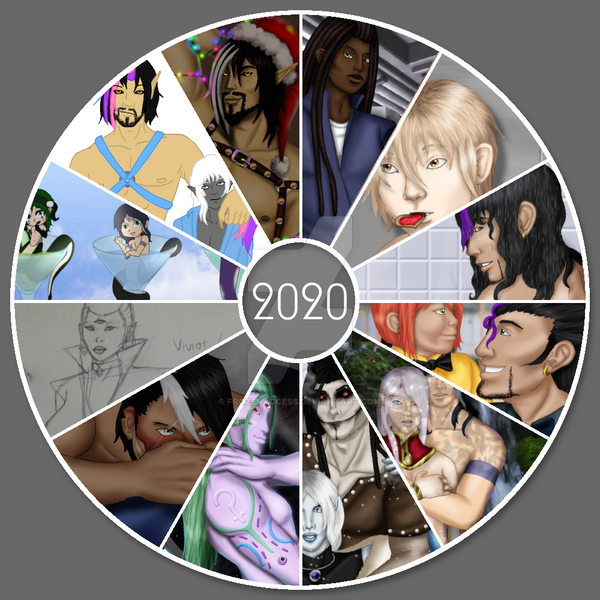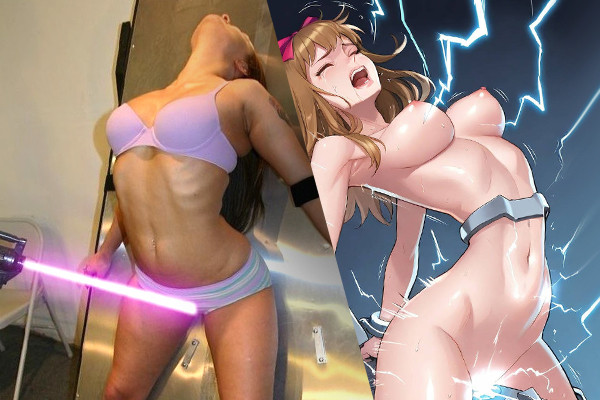HOME | DD
 Frozenaccess — [ULDERIAN] Design Reference
Frozenaccess — [ULDERIAN] Design Reference

#alien #cerean #creature #creaturedesign #custom #race #species #designreference #traitsheet #closedspecies #closedoriginalspecies #ulderian #uldera
Published: 2023-07-27 05:42:23 +0000 UTC; Views: 2770; Favourites: 14; Downloads: 0
Redirect to original
Description
Despite the differing traits and regions that produced each Ulderian race, they are as biologically similar to one another as the various races of humans are to other humans.
Mountain Ulderians mostly resided (as their name suggests) in the mountains. Due to being closer to the rays of the sun, the equator of their planet in general -AND having less protection from the rays- Mountain Ulderians developed darker skins with less colorful pigmentation. This is to blend in in the dark mountains as well as to protect their bodies from harsh rays.
Valley Ulderians have a bit of a misnomer name; it comes from being the opposite of the Mountain. But they were not limited to the Valleys. Often being from all assortment of lower elevation land types. As such they became more colorful and had fairer complexions.
Ocean Ulderians tend to reside on islands, or in the coastal regions of their home world. They spend the majority of their time in and around water, giving them some useful adaptations like a large lung capacity for deeper diving, and webbed hands and feet for better swimming. The only of these people who do not live on islands or coastal areas, are those who have formed underwater cities and live deep in their oceans' depths.
Void Ulderians are by far the most unique and least similar to their planet-side cousins. Void Ulderians have spent hundreds of years living in space and dealt with the drawbacks that come with Cosmic Radiation and similar ailments. They look the most different and have the most unique society – but they also have the least written knowledge from the other three types – who know almost nothing about them other than that the Void Ulderians gave them the power of space travel.
Anatomy
Ulderians are much taller than humans. Their outward physical bodies are quite similar, except they lack the "pinkie toe" on their feet, leaving only 4 toes. They still have 4 fingered hands with opposable thumbs.
The average height for an adult Ulderian Male is 6'8" (207 cm) or about 1 foot taller than the average adult human male.
The average height for an adult Ulderian Female is 6'5" (198 cm) or about 1 foot taller than the average adult human female.
Ulderians also tend to have an "8 pack" vs. the usual "6 pack" of humans.
Females breast sizes tend to range from an A cup to a D cup. Breast sizes larger than this are extremely uncommon and most Ulderian females who go beyond a DD cup will usually get reduction surgery as they find them to be an obstacle rather than a desired trait.
Special Intel:
Ocean Ulderians also have webbed hands and feet to aid them in swimming, along with an increased lung capacity that allows them to spend more time in and underwater than their land locked cousins. Their hair also seems more capable of holding moisture and protecting itself against salt.
Skin
Mountain Ulderian - Skins are very Earthy colors. Grays, browns, and very, very muted colors that look muddy or more like rock and stone. Whites and super light grays are more common in Mountain Ulderians from snowy regions, darker, slate skin tones are more common in dryer/warmer climates. Their skin tones can very in tint, some of the browner tones even looking closer to human skin.
Valley Ulderian - Skin tones fall all along the color spectrum, but usually remain very pastel in color. They can be any color of the rainbow, and occasionally drift into realms that mimic / look more like human skin. While their skin is rarely vibrant or at full saturation of color, they have been known to occasionally take on darker than pastel tones. Though no where near as dark or as lacking of saturation as a Mountain Ulderian.
Ocean Ulderians – Skin tones range along a blue spectrum, with some shades of bluish-green and deep purple. Their skin color verges on the cooler tone side and is usually more brightly pigmented than Valley or Mountain Ulderians. These colors mimick many tones and shades of the bodies of water they reside by/in.
The shade on their skin also varies depending on where they live. Those living consistently on the land, in areas with lots of shallow waters and coral reefs, tend to have the most vibrant tones. Those who live their lives on land more sparingly, preferring to spend most of their time in the water, have tones that are darker in order to camouflage them in deeper water.
Additionally, those that have slowly transitioned deeper into the ocean, living in underwater bubble societies, have hyper-pigmented tones and tend to hide better in the ocean depths.
All three regional skin types have a spattering of bio-luminescent skin patterns that they can use to communicate and locate one another while underwater.
Void Ulderians – The people of the void have two main settings: albinism or hyper-pigmentation. They can also be found having a dull gray tone that sits somewhere more directly in the middle, though muddier tones between these three being quite uncommon.
Unlike Mountain Ulderians, who might have some warm or cool tones to their skin to better blend in with their surroundings, Void Ulderians find themselves to have completely neutral/ muted skin colors. They are not warm or cold, but essentially white, black, and maybe a few are gray.
Much like their Ocean brethren, the Void people have bio-luminescent markings on their skin, though theirs tend to be more like human freckles in shape and can make them almost disappear against the background of the void of space.
Unlike the Ocean Ulderians, Void's markings glow so brightly that they can be seen glowing in most levels of light, but are hardest to notice in direct sunlight.
Special Intel:
Ocean skin also seems to have a resistance to drying out, not needing to do as much to keep their skin from drying out despite the high salt content of the water they swim in regularly. Contrarily, all other Ulderians seem to be varying levels of susceptible to drying, with Valley being the most prone to dry skin when not properly upkept.
Hair:
Mountain Ulderian - Mostly along the black - white monochromatic scale. Much like their skin, Mountain Ulderians tend to only have extremely muted colors. Rarely, their hair will have a slightly more pigmented color where you could easily say it's “Red” or “Blue” or something.
Valley Ulderians - Much like their skin, their hair can be full spectrum. And their hair is generally more saturated than their skin. While it's not uncommon for them to have skin and hair of the same color, usually the colors are quite different. For example having green skin and pink hair, or blue hair and pink skin. Etc.
Ocean Ulderians – Their hair color falls into two categories. Blues that are very similar to their skin tone possibilities [though rarely do you find someone with hair that perfectly matches their skin] with the chance of white or black OR vivid colors that match the shallow water coral reefs – with warmer tones being more common, giving them a gorgeous contrast of cold colored skin with warm, fiery toned hair.
Void Ulderians – The people of the void have hair that mostly lacks in color, often black or white appearing with no particular tone – that very quickly shifts into a bright, glowing vibrant portion of their hair that glows in a variety of bright colors. No one is quite sure when this developed, but not only does the hair glow – but it's brightness can be controlled by the Ulderian and is often used as a form of nonverbal communication.
For the most part, their hair is much the same as humans. It is worn at any sort of length in any style. It requires a lot of the same love and care as human hair to be lush and silky. However, their hair tends to naturally be thinner and have less volume than humans. Facial hair is quite rare in Ulderian men, and side burns tend not to connect with beards. Rather, they tend to reach the cheekbones and then grow across the face toward the nose, stopping generally an inch from the nose on each side or so. They do not have mustaches but are capable of growing beards the entire space of their jaw line and some hair up directly under their bottom lip.
Special Intel:
Mountain people tend to have a dryer hair that is better suited to their climate, where Valley people tend to have rich, luscious and silky hair. Though Mountain hair can easily reach this consistency. Ocean people have hair that can better retain it's natural moisture so it's not dried out as easily by the salty sea air – nor from spending a lot of time in the water. Their hair is more likely to be thick and has a natural wave to curly texture. And the Void Ulderian hair is strange. It's light and often floats even when they're planet side. Their hair seems to lack natural pigmentation but also appears to be capable of producing colors as it glows. Their hair is like the thinnest fiber optics one could imagine.
Eyes:
Ulderians have three eyes. The lower two are ALWAYS dual-pupil/dual-iris and the irises are always connected. Their third eye is ALWAYS singular. Eye colors are always vibrant and what one would consider "Fantasy" like. They can be almost any color that you can think of EXCEPT in the range of "natural green" that humans have, (“natural green" and "hazel" eyes). Brown eyes are quite rare for all Ulderians.
Special Intel:
Void Ulderians have the addition of eyes that seem to naturally glow. They are open to an equally wide range of colors, but their eyes appear to glow as if producing their own light.
Nose/Profile/Facial Features
Ulderians have very flat faces. The bridge of their nose is almost non-existent and lack "nostril wings". Only the tip of their nose sticks out of their face and their nostrils have a more reptile like appearance.
Ulderians do not have eyebrows, but do have thicker, albeit shorter, eyelashes than humans.
Males tend not to have a cupid's bow in their upper lip, whereas females almost always have it.
Males tend to have sharper, more angled jawlines just like humans, whereas females tend to be softer and more rounded in the face. They do, however, have better defined cheekbones than their male counterparts.
Mouths
Ulderian mouths aren't too different from human's, but their internal mouth skin tends to match their exterior skin. For example, if it is purple, then their tongue, gums, throat, etc will be purple as well.
Much like humans, they have molars, incisors, etc for eating both plant matter and meat. Their teeth are naturally white, however, Ulderians have double canine teeth on the top and bottom of their mouths. They also have three sets of teeth, two of which are sets of adult teeth should they lose any. Their canine teeth are sharper and more pointed than humans, sharing similarity to a wolf or wild carnivore, allowing them to tear meat more easily.
Their tongues are an average of 6 inches long and 7 centimeters wide at the widest part. These tongues are tapered in shape and semi-prehensile, granting them the ability to wrap around and pick up items. How much can be lifted with their tongues varies from Ulderian to Ulderian, but documentation has found that they are able to safely, and consistently, hold roughly 1lb items.
Ears
Ulderians have the "classic elf ear" going on with a slightly doubled point to their ears. The lower point is always shorter than the upper point. Their ears can be relatively short and more like the "santa's elf" style ear, to being as long as the ears of a World of Warcraft Nightelf. Regardless of length, their ears will ALWAYS have at least two points. Some Ulderians have multiple points to their ears that run down the external ridge of their ear. Each one is shorter than the point above it. Multi-point ears have a minimum of 3 points and usually no more than 5, but it is possible to have more. Just like human ears, each Ulderian has a shape as unique as a finger print to the folds of their ears.
Mutations
Gloves and Socks - This mutation is the most common mutation and happens more often in Mountain Ulderian than Valley.
For Mountain Ulderian it's about 1 in every 100
For Valley about 1 in every 300
For Ocean Ulderians it's 1 in every 50,000
And this does not appear to occur in Void Ulderians at all.
It gives the appearance of the Ulderian wearing gloves or socks, and can be any amount of their legs and/or arms. This mutation does not spread onto the torso or beyond, and one can have just "gloves" or just "socks", or both. They can also have this mutation on just one arm/leg and on just one side of their body and not the other. They may even have a "sock" on one side and a "glove" on the other. In rare cases, the mutation is limited to the fingers and toes, but generally covers at least 3/4ths of the hand or foot, and at most covers the entire limb up to the joint.
Verticle 3rd Eye - The third eye is rotated 90 degrees. While this eye is usually capable of seeing, their vision is generally slightly impaired. It functions just fine and the muscles are rotated as well, allowing the eye to blink, move, etc. The eyeball itself is generally not rotated, but rather the muscles and eyelid are. This is more common in Valley Ulderians than Mountain Ulderians, but is quite uncommon.
Usually only 1 in every 3000 Ulderian have this.
For Mountain Ulderian it's 1 in every 5000.
This mutation is actually an adaptation for the Ocean Ulderians and occurs roughly 90% of the time.
Extra Arms - This mutation results in extra arms. As little as one extra arm and as many as two (very rarely are there 5 or more total arms). This is Arms only, and the arms are almost always functional, as those with this mutation tend to also have extra muscles to control the limbs within their torsos as a part of the mutation.
This is an extremely rare mutation, and for Mountain and Valley Ulderian it is about a 1 in half a million chance. HOWEVER this is a pretty much guaranteed adaptation for the Ocean Ulderian, and occurs at a frequency of 1 in 1000 for Void Ulderians.
-------------------------------------------------------------------------------
Artwork and Species ©
























